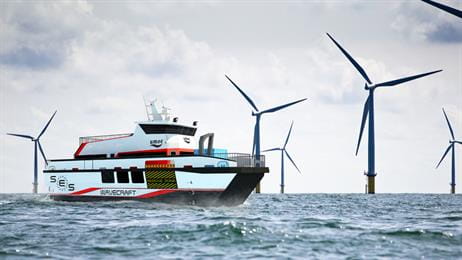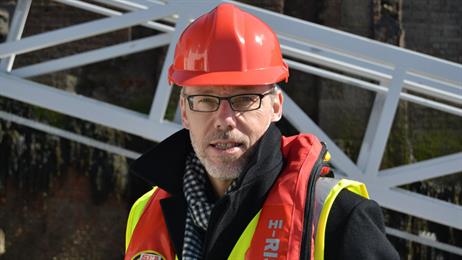
The new crew transfer vessel at Borkum Riffgrund 1
- Owned by Umoe Wind AS, constructed by Umoe Mandal AS.
- Leased by DONG Energy for eight months effective 1 March 2015 with the opportunity of extending the lease with another four months
- The Wave Craft vessel is 26 metres long, 10 metres wide and has a total cargo capacity of four tonnes. Depending on the waves it's transit speed is +40 knots and it's average range is +500 nautical miles with 2-3 crew members and 12 passengers on board
- Compared to conventional crew transfer vessels, the Wave Craft vessel should be able to reduce the time spent on transportation by around 50%.
- Transfer time from Norddeich to Borkum Riffgrund 1 will, due to regional speed restrictions, be reduced approx. 30%
- Due to the increased stability of the vessel, we expect to be able to transfer O&M personnel in waters with wave heights of 2m Hs or the equivalent of 3.7 metres
Learn more about the Wave Craft vessel .
The Carbon Trust Offshore Wind Accelerator programme (OWA)
- Set up in 2008, the OWA is a joint industry project, involving nine offshore wind developers with 72% (31GW) of the UK's licensed capacity
- OWA aims to reduce the cost of offshore wind through innovation by 10% by 2015
- The Offshore Wind Accelerator is two-thirds funded by industry and one-third funded by the UK Depart-ment of Energy and Climate Change (DECC) and the Scottish Government. The Carbon Trust's OWA industrial partners are nine international energy companies
